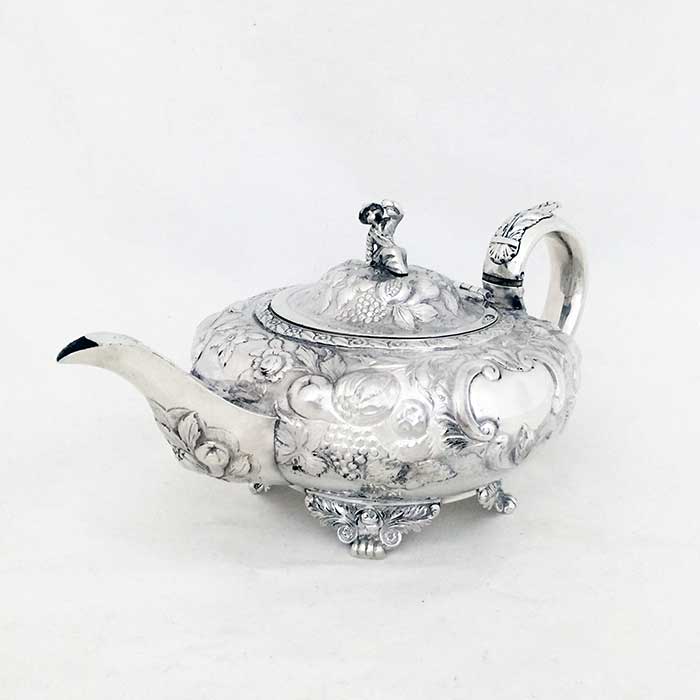Chinoiserie Silver

Chinoiserie is a word borrowed from French and means a style in art reflecting Chinese qualities or motifs.
It is the European interpretation and imitation of Chinese and other East Asian artistic traditions and focuses on subjects that were thought by colonial-era Europeans to be typical of Chinese culture
In the17th and 18th centuries Europeans had a fascination with Asia due to their increased, but still restricted, access to new cultures through expanded trade with East Asia, especially China. The limited number of European first-hand experiences of East Asia and their restricted circulation created some interesting interpretations of exactly what life in China was like.
As a style, chinoiserie is related to the Rococo style. Both styles are characterized by exuberant decoration, asymmetry, a focus on materials, and stylized nature and subject matter that focuses on leisure and pleasure. Chinoiserie focuses on subjects that were thought by colonial-era Europeans to be typical of Chinese culture.
The influence of Chinoiserie was seen in paintings, ceramics, lacquer-ware, textiles
Interestingly it wasn’t until the early 19th century that silver became one of the art forms that benefited from this western interpretation of things Chinese
Almost all the pieces of Chinoiserie silver we find are from the early 19th century


Here we have a wonderful example of Chinoiserie silver.
This three piece teaset is by Henry Holland – a well respected silversmith. The hallmarks show his makers mark and the marks for London 1824.
It is typical of the chonoiserie style – the exuberant decoration, the closely chased work on the round bodies but most of all it has to be the Chinese coolies that form the finial and the decoration on the handles. Note the handle-bar moustaches on the faces of the figures on the handles – definitely a western interpretation!
This tea set would have been the height of fashion as it was made.
Look at this amazing Chinoiserie silver caddy dated 1853


Chinese tea in a Chinoiserie tea caddy!
Again you see with this creamer, by Napthali Hart dated 1821, the typical flamboyant Chinoiserie style. Note the western interpretation of a coolie.


This is a Chinoiserie silver bowl by Joseph Angell dated 1839 complete with the coat of arms of the original owner.


It wasn’t just grand pieces of silver that were given the Chinoiserie treatment:
This Chinoiserie silver mustard pot dates from 1844

But as always beware
This fine tea pot is Chinoiserie silver courtesy of the final. The finial has the same makers mark and date as the tea pot

Sometimes coolie finials are added to non-Chinoiserie pieces – always check

I found this finial in a market -add this to a tea pot and up goes the price!
The opium wars of 1839–1842 between Britain and China disrupted trade and the whole new genre of Chinese Export silver was born
See my blog: Chinese Export silver marks – early quality control – Esme Parish Silver
and there was less demand for the English silversmiths to make Chinese look-alike pieces.
If you want to see some of these Chinoiserie silver pieces then do contact me either via whats app – hit the button- or via email esme@esmeparishsilver.com